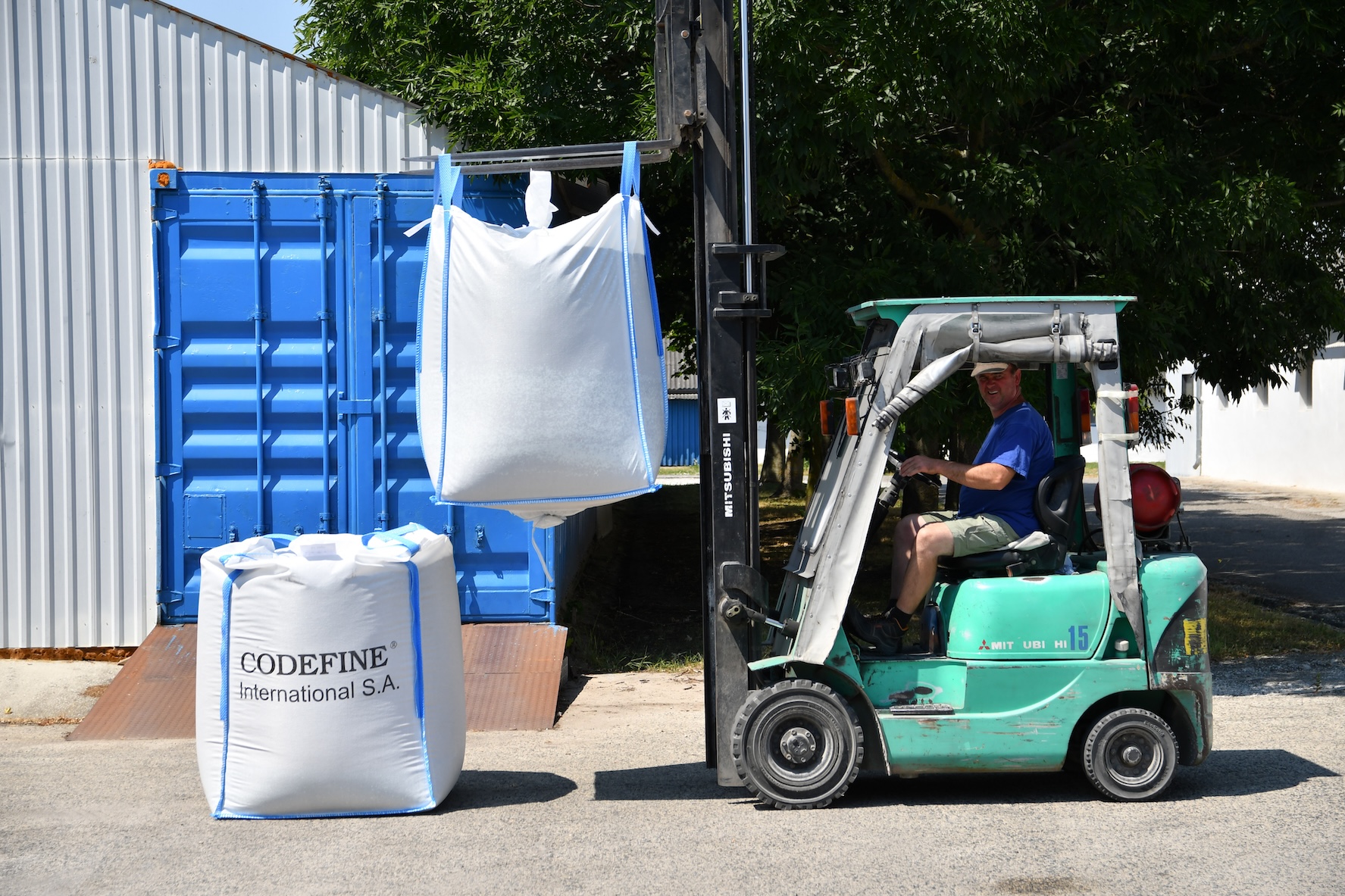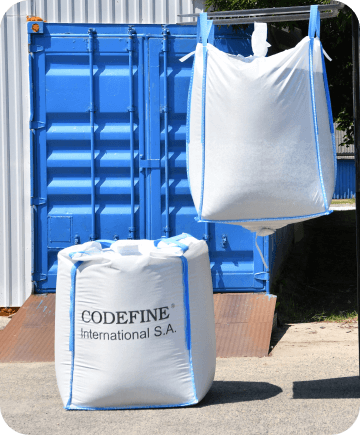Home » Posts Page » Blog » What is a Super Sack Bag? Features and Benefits Explained

Super sack bags come in a few different varieties. Spout bags are one of the more popular variants. As the name suggests, this type of super sack features a spout at either the top or base of the bag itself. They’re also equipped with lift loops for easy handling with a forklift.
Jumbo bags are another option. Far sturdier than other super sacks, jumbo bags are designed with bulky loads in mind and boast a far higher weight capacity. Despite their heavy-duty credentials, they’re still compatible with forklifts and other types of loading machinery. Looking for something that can handle heavier loads? One-ton bags are something to consider. These bulk bags are compatible with forklifts, unloaders, pallets, and more.
Duffle top bags are yet another commonly encountered type of super sack. These bags have a large opening that makes contents far more accessible. They can hold substantial loads of up to 1350 kilos, with a wide range of duffle top bags available for all manner of applications.
Not sure whether to go with polyethylene (PE) or polypropylene (PP) bags? The PE vs PP bags debate is a moot point once you take a closer look at the credentials of polypropylene. Super sack bags are generally made of woven PP, with this thermoplastic material being lightweight and flexible, yet incredibly strong and hard-wearing.
To create a super sack bag, polypropylene strands must be first woven into sheets of material. Once this process is finished, the sheets are cut down to the desired size before UV-resistant finishes and other treatments are applied. After that, individual panels are sewn together to create a finished super sack.
Super sacks are used across many industries. They’re commonly used in the construction industry, with these heavy-duty bags perfect for storing and moving cement and other building materials. They’re also a popular sight in the agricultural sector, serving as a reliable way to transport animal feed and fertilizer.
Food-grade super sacks can be used to transport edible goods intended for human consumption, while they’re also utilized by the pharmaceutical industry for storage and logistics of medicines and chemicals.
Super sack bags are a convenient choice for material storage and logistics. Features like lifting loops allow super sacks to be handled by machinery like forklifts, reducing the need for manual labor. What’s more, as super sacks can be stacked, they’re a practical storage solution when space is at a premium.
Some super sacks can be reused, while most are reusable. This makes them an eco-friendly choice, as well as being a cost-effective alternative to other types of packaging. Owing to their durability, super sack bags are also a safe storage and haulage solution for expensive and potentially hazardous materials.
If you’re unsure about how to correctly handle super sack bags, it’s a good idea to consult the Safe Handling Guidelines issued by the Flexible Intermediate Bulk Container Association (FIBCA). These guidelines stress the importance of choosing the right super sack bags for your specific needs and industry setting. Furthermore, you’ll need to choose super sack bags that are suitable for use with the product you plan on handling, as well as the environment you’ll be working in.
Regular assessment of super sack bags is also recommended. These checks should be meticulous, looking for signs of damage from moisture and any telltale degradation of bag fibers. Features like lift loops should also be inspected for signs of damage. Contamination is another potential concern. If super sack bags have been exposed to any harmful materials, they’ll likely need replacing.
The FIBC also lays out specific guidelines on filling and discharging, super sack bag handling, and storage and transportation. To ensure you’re fully compliant, it’s essential that you refer to the latest FIBC guidelines.
By their design, super sack bags are well-proportioned and able to accommodate heavy loads. However, some bulk bags have more generous capacities than others. Some bulk bags can comfortably carry up to 500 kilos, while larger versions can hold loads of up to 2,000 kilos.
Choosing a super sack with the right weight capacity is crucial if you want to avoid premature wear and tear to your bulk bags. What’s more, selecting a bag with the right load-bearing capacity will avoid unwanted accidents and health and safety breaches.
Looking for super sack bags to help with a construction project? Perhaps you’re searching for a reliable long-term storage solution for fertilizer or agricultural projects. At Codefine, you’ll find an unbeatable range of super sack bags and other heavy-duty storage solutions. Our super sack bags are made from hard-wearing woven polypropylene, with user-friendly features to make everyday operations easier. Eager to learn more about the range? Keen to learn the difference between single-trip and multi-trip FIBC bags? Why not get in touch with the team today to discuss your requirements?

Super sack bags aren’t waterproof. However, there are many steps you can take to ensure contents are protected from moisture and water damage.
Only multi-trip super sack bags can be reused. Bags should have a 6:1 safety factor rating and have been handled correctly if they are to be reused.
Yes. Provided a super sack bag is made from virgin polypropylene, it can be recycled.